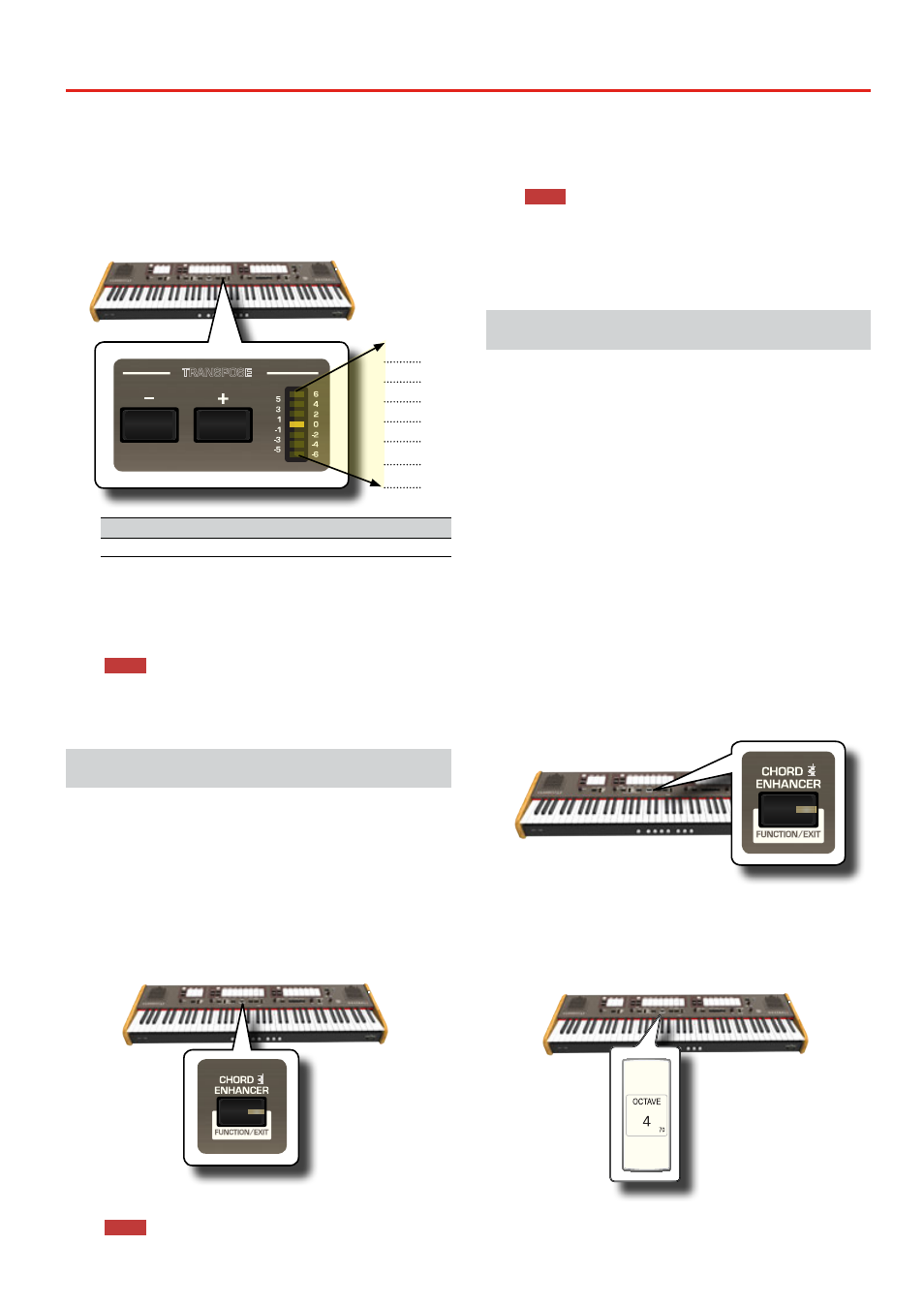Improve the sound (chord enhancer), Changing the settings for crescendo, Improve the sound (chord enhancer) 1 – Dexibell CLASSICO L3 76-Organ User Manual
Page 31

31
Improve the Sound (Chord Enhancer)
1.
Press and hold one of the buttons of the section you want
to adjust until it's indicator flashes.
You are now in edit mode.
The indicator of [TRANSPOSE] shown the octave value for the
section you chose.
2.
Use the [-] and [+] TRANSPOSE buttons to shift the octave
of keyboard notes upward or downward by up to +3/-3
.
PIANO
HARPSICHORD
TUNING
TEMPERAMENT
TRANSPOSE
+3
+2
+1
0
-1
-2
-3
“Octave” setting
-3 ~ 0 ~ +3
3.
If you want, you can press the button of other sections to
adjust its octave.
4.
Press the button of the section again to leave edit mode.
NOTE
See "Working with Memory Pistons" (p. 33) to save your
settings. If you don’t save them, your changes are lost when you
switch off the CLASSICO L3
Improve the Sound (Chord Enhancer)
This function improves the sound it plays automatic harmonies that are
added to the chord that you are playing using the Manual I division.
The Chord Enhancer function works when a tone of the Strings and Choir
family is selected and the function is active (CHORD [ENHANCER] button
indicator is lit).
1.
Select a tone of the Strings or Choir family on the Manual
I division. See "Playing Orchestral Sounds with the
2.
Press the CHORD [ENHANCER] button.
PIANO
HARPSICHORD
TUNING
TEMPERAMENT
TRANSPOSE
The [ENHANCER] button indicator lights and the Chord Enhancer
function is active.
NOTE
If the current selected tone is not a tone of the Strings or Choir
family, the Enhancer function is disabled.
3.
Play a chord on the keyboard.
The Chord Enhancer function adds notes to the chord you played.
NOTE
The Chord Enhancer function works in the Manual I division, both in
split mode and in layer mode.
4.
Press the CHORD [ENHANCER] button to leave this
function.
Changing the Settings for Crescendo
The CLASSICO L3 is equipped with a crescendo pedal socket to connect an
optional expression pedal. See p. 16. The settings of crescendo can be
saved or loaded
The crescendo pedal is sometimes necessary in certain type of organ
music.
The crescendo pedal incrementally activates a predetermined selection
of tilt tabs as it is pressed forward and removes tilt tabs as it is depressed
backward. This predetermined selection start with very quiet (pianissimo)
to very loud (TUTTI).
If you need, you can edit and choose which tilt tabs to activate for each
step.
It's possible to modify the Crescendo for each type of organ set.
You can export or import your crescendo settings to an USB memory
commercially available. See "IMPORT CRESCENDO SETTING" and "EXPORT
CRESCENDO SETTING" (p. 45).
The crescendo pedal contains 7 pre-programmed registrations (steps) per
bank.
Enter in Crescendo Setting Mode
1.
Select the Organ bank you need to change the Crescendo
for. See "Selecting Various Organ Types" (p. 21).
2.
Press and hold the [FUNCTION/EXIT] button.
PIANO
HARPSICHORD
TUNING
TEMPERAMENT
TRANSPOSE
The [FUNCTION/EXIT] button flashes to indicate that we are in
function mode. All other indicators go dark.
3.
Press the lower part of the "70" tilt tab to select the
crescendo setting function.
The [1], [2], [3], [4], [M1], [M2], [M3] pistons indicators start flashing.